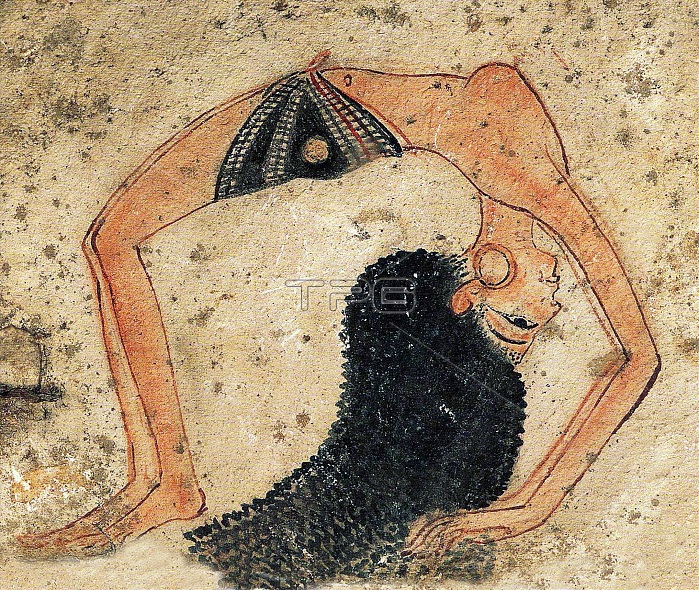
In ancient Egypt entertainment by dancers was common, but mixed gender dancing is not represented in murals and frescoes. Egyptian dancing may have been influenced by the Nubian tradition, which became very popular in Rome during the days of the empire, and is still alive in parts of the Sudan today. Dancers from the south were brought to Egypt and seemingly much admired. Egyptian choreography appears to have been complex. Dances could be mimetic, expressive - similar to modern ballet with pirouettes and the like, or gymnastic, including splits, cartwheels, and backbends. A few pictures of acrobatic dancers have been found, generally depicting a number of dancers performing the same movement in unison. For sociable banquets the dancing girls were often selected from among the servants or the women living in the harem of the nobleman in whose house the party was held; possibly professional dancers were also hired for these occasions. Pictures of such gatherings show girls performing slow elegant dance steps, which may have alternated with wild acrobatic movements. Public celebrations were accompanied by dancing, whether spontaneous or orchestrated.
| px | px | dpi | = | cm | x | cm | = | MB |
Details
Creative#:
TOP27177409
Source:
達志影像
Authorization Type:
RM
Release Information:
須由TPG 完整授權
Model Release:
No
Property Release:
No
Right to Privacy:
No
Same folder images:

 Loading
Loading